AND THEY STILL LIVE THERE!
Karim Carella
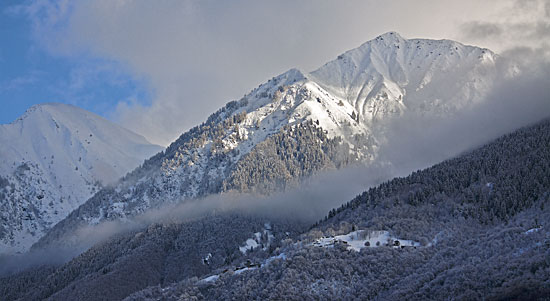
"And they still live there!" I murmured when I got to Val Codera…
A little over 100km from Milan, the capital of progress and a symbol of modernity and technological development, is a place more unique than rare.
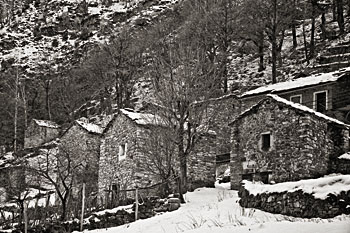 Lost up in the heights, looking southwards over Lake Novate Mezzola, the last appendage of Lake Como, Val Codera stands proudly isolated and forgotten by mass tourism. Indeed, it is the only inhabited valley in the sweep of the Italian Alps totally devoid of any metalled roads. Lost up in the heights, looking southwards over Lake Novate Mezzola, the last appendage of Lake Como, Val Codera stands proudly isolated and forgotten by mass tourism. Indeed, it is the only inhabited valley in the sweep of the Italian Alps totally devoid of any metalled roads.
It isn't that time has stopped here, it's more like being back in the past, where you travel on foot like the original inhabitants of the valley.
The slow pace of the homonymous river marks the rhythm of life in this region. Here, where mountain slopes and paths are not inaccessible but often very steep, nature reigns supreme, completing her seasonal cycle without man to change the equilibrium.
Val Codera is situated at the confluence of the Valchiavenna and the Valtellina, in the heart of the Retic Alps, a tiny corner of the world which has determinedly preserved and defended its origins over time, stubbornly enduring the rigours of a life characterized by harsh winters in a region both impenetrable and hard to tame.
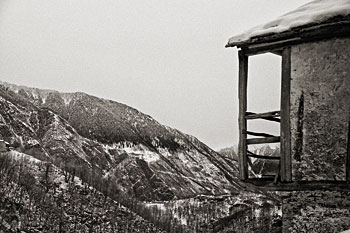 Even though since the early 1900s the inexorable pace of time began to slowly erode the number of inhabitants in the valley (just before the Second World War they numbered 500), some of them (about twenty or less) still remain and are keeping this special place alive with their amazing spirit of denial and self-sacrifice. Even though since the early 1900s the inexorable pace of time began to slowly erode the number of inhabitants in the valley (just before the Second World War they numbered 500), some of them (about twenty or less) still remain and are keeping this special place alive with their amazing spirit of denial and self-sacrifice.
Located at an altitude of 850 metres, the settlement of Codera can be reached by the path which, starting from Mezzolpiano, climbs up a steep slope made up of terraces of granite rock. Come winter, a good pair of snowshoes is the best equipment in these places.
Making the ascent, following those steps which disappear under the snow, you stop to take your breath: and you hear your breath echo noisily in the silence. Your attention is lost in your surroundings, and then is drawn downwards, towards Novate Mezzola, the lake of the same name and the nature reserve of the Pian di Spagna. In winter, all along this route, the snow acts as a natural silencer, making the presence of man seem almost imperceptible, muffling and lightening his footsteps.
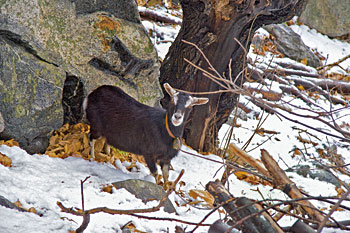 It is not unusual to meet up with some friendly travelling companions: the mountain goats, peacefully grazing on the wooded slopes, observing the strenuous ascent of man with a certain curiosity. The first settlement you encounter is the village of Avedèe with its little chapel. The dried up flowers left inside are the first sign of that silent human presence which has never left these places. Then the path almost levels out, in a series of ups and downs. The many stretches protected by steel ropes, which skirt the edges of the rocky outcrops, and give onto the precipice, do not let one forget the harshness of this environment. It is not unusual to meet up with some friendly travelling companions: the mountain goats, peacefully grazing on the wooded slopes, observing the strenuous ascent of man with a certain curiosity. The first settlement you encounter is the village of Avedèe with its little chapel. The dried up flowers left inside are the first sign of that silent human presence which has never left these places. Then the path almost levels out, in a series of ups and downs. The many stretches protected by steel ropes, which skirt the edges of the rocky outcrops, and give onto the precipice, do not let one forget the harshness of this environment.
"That which we once were one of you are now. Whoever forgets us forgets himself" proclaims the epitaph situated at the entrance of the little cemetery in Codera. It is a warning, but also an incitement to memory: the memory that the inhabitants of this valley chose to cling on to, when they decided not to break their bonds with the past. For while they are fully aware of their own vulnerability in the face of the mountain, they live in the knowledge that continuing the old traditions and keeping the past alive is their reason for existence.
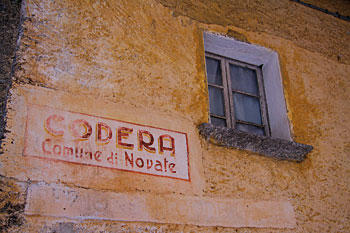 In the hamlet of Codera one may happen to come across one of these inhabitants, perhaps bent double under the weight of a basketful of wood, and soon learn that that very wood will be used to stoke the fireplace in the small hut offering refuge to hikers. In the hamlet of Codera one may happen to come across one of these inhabitants, perhaps bent double under the weight of a basketful of wood, and soon learn that that very wood will be used to stoke the fireplace in the small hut offering refuge to hikers.
Even if it was only brief, this experience of communion with nature cannot help but leave a deep impression.
The return to "civilisation", with its noise and frenetic pace, makes one sigh with nostalgia, feeling a subtle sense of envy for those guardians of memory who live up in that place, protected by the silence of the mountains. |
 NUMBER 11
NUMBER 11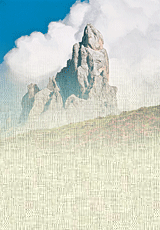
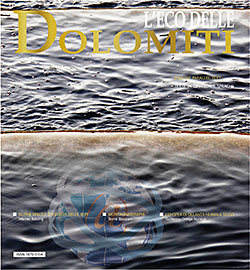
 NUMBER 11
NUMBER 11
